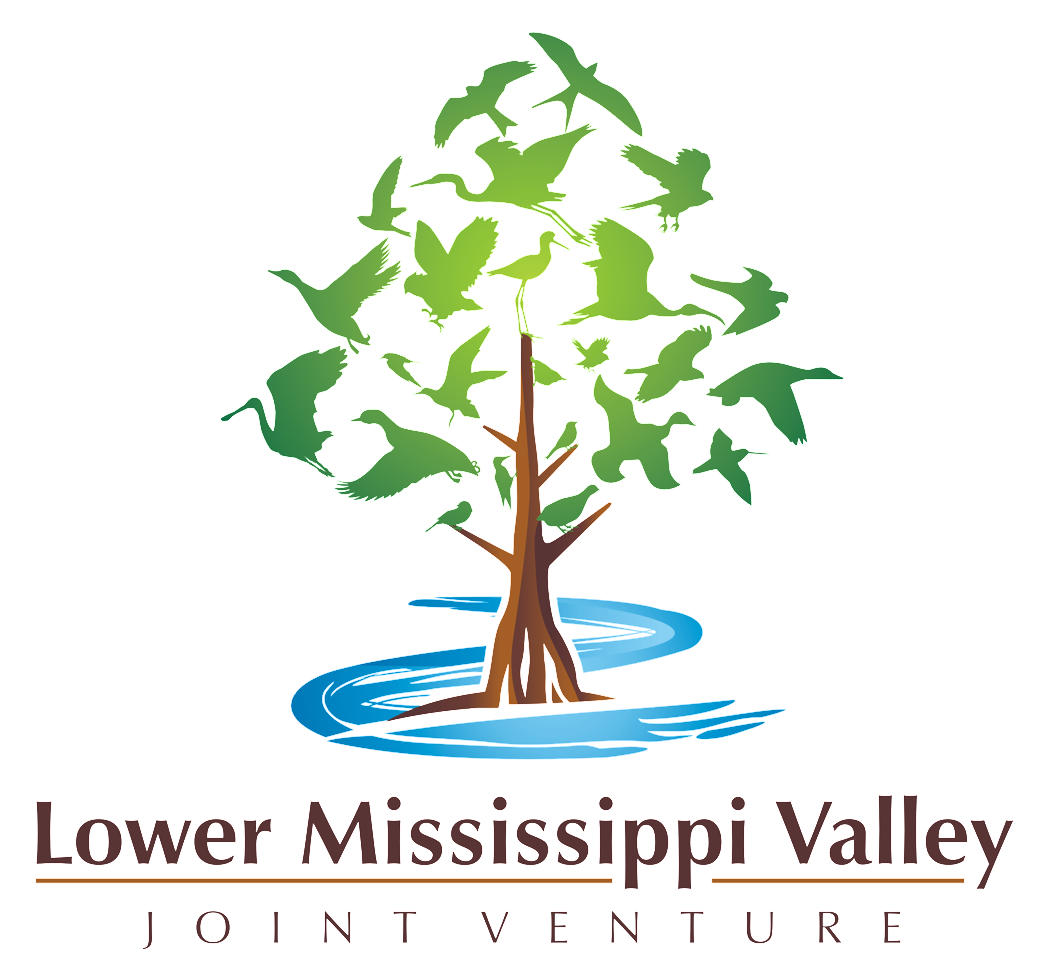Ducks Unlimited Easement Program Nears 200,000 Acres Protected in MAV; Looks to Future of Program
Ducks Unlimited’s conservation easement program is approaching an important milestone for land protection in the MAV. Wetlands America Trust, Inc. (WAT), a land-holding subsidiary of Ducks Unlimited (DU), accepted its first perpetual conservation easement in the MAV in 1996. Almost 25 years later, DU/WAT’s conservation easement program is nearing 200,000 acres protected in the MAV. This tremendous growth in perpetual land protection is an important step in achieving the habitat objectives outlined by the LMVJV partnership and DU’s conservation program strategies, both of which aim to sustain continental waterfowl populations defined in the North American Waterfowl Management Plan.
“Luque Grande Vue Farms, photo by Barber and Mann, Inc
To manage and continue growing this portfolio of conservation easements, DU recently hired a Conservation Lands Coordinator for the MAV. Josh Green started with DU in October 2019, and he immediately saw some lessons to take from the historic success of the easement program. “I was a history major,” noted Green, “so I’m naturally drawn to looking to the past for guidance on how to move forward.” Unsurprisingly, one of the most important aspects of DU/WAT’s success with its easement program in the MAV comes down to effective collaboration with a wide range of stakeholders through partnerships like the LMVJV. “It’s really just a testament to the commitment of DU staff, private landowners, and other public and private partners that the program has protected so many acres in the MAV in less than 25 years,” says Green.
This kind of collaboration will be important as DU/WAT looks to incorporate the latest conservation planning tools into its conservation easement program in the MAV. In this regard, sound science has always been the foundation of DU’s work conserving, restoring, and managing wetlands and associated habitats for waterfowl, other species, and people, and the conservation easement program in the MAV is no exception. DU/WAT already uses a variety of science-based conservation planning tools, like DU’s Land Protection Prioritization Model and the updated, LMVJV partnership-derived MAV Forest Protection Priority tool—both of which help guide efficient and effective conservation delivery across the MAV landscape toward addressing LMVJV habitat objectives. These tools have always been helpful in evaluating potential projects that were offered up to the program, but DU/WAT wants to use these models to actually generate conservation easement opportunities on properties that will most effectively address relevant habitat objectives.
As Green puts it, “In the past, many of our easements began with a landowner coming to us and saying, ‘I’d like to donate an easement to DU,’ and then we’d use some of these conservation planning tools and other resources to evaluate whether the property is a good fit for our program.” Those kind of landowner-initiated interactions will continue to be important, but DU/WAT wants to supplement this more passive approach with a method that consults the conservation planning tools first to identify high priority properties, and then DU/WAT would proactively target those priority properties for perpetual conservation easements. “Basically,” Green explains, “we want to start with the science and the data, which includes some of the conservation planning tools available through the LMVJV, see what properties they say to protect, maybe filter those results by acreage, proximity to other easements, number of owners, or other relevant factors, and then see what happens if we go try to put easements on the properties that emerge from that framework as the best of the best.”
DU/WAT is developing the details of the framework, and input from the LMVJV partnership will be vital in this dynamic process. Green says, “we’ll have to adapt the framework as we see what works, and to bring new or updated data sets, but that’s a good thing as it should lead to better overall conservation outcomes.” Perhaps DU/WAT hits the 200,000-acres-in-the-MAV milestone by protecting property that this framework identifies. If so, it would be a fitting way to mark a major accomplishment in the nearly 25-year history of the program. But regardless of whether the timing works out that way, this initiative should continue to position DU/WAT’s conservation lands program at the forefront of meaningful land protection in the MAV.

